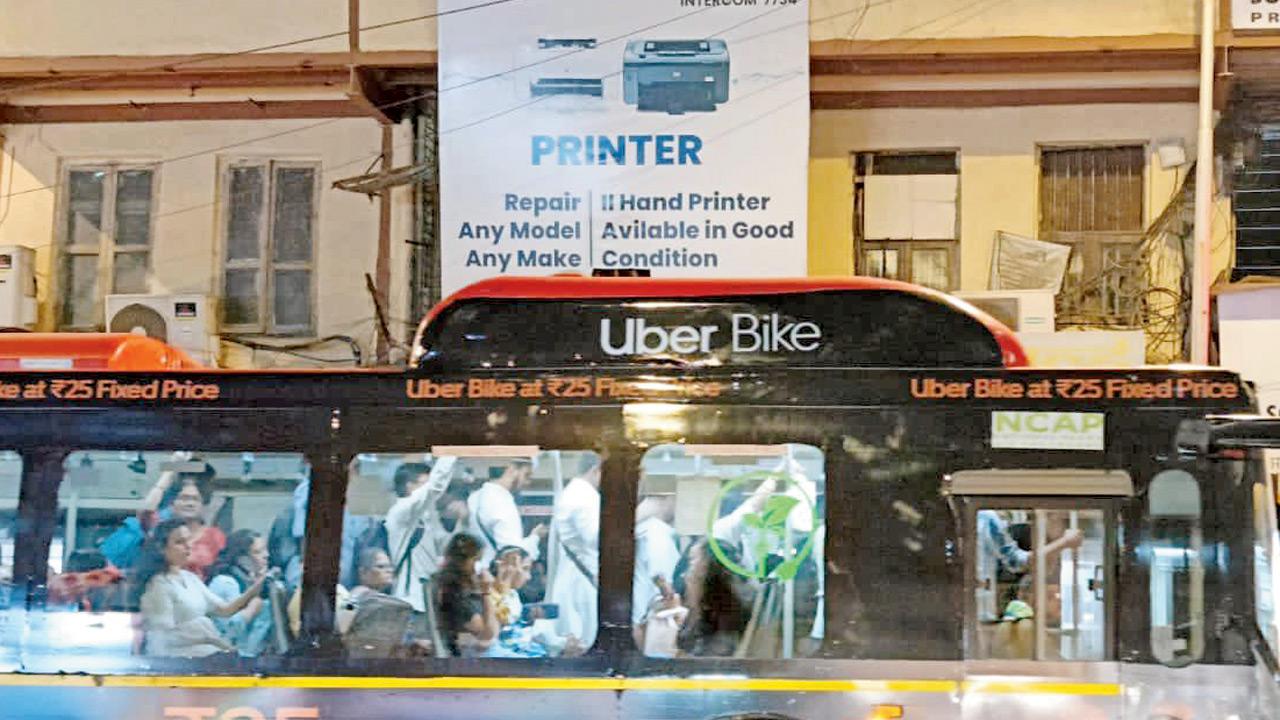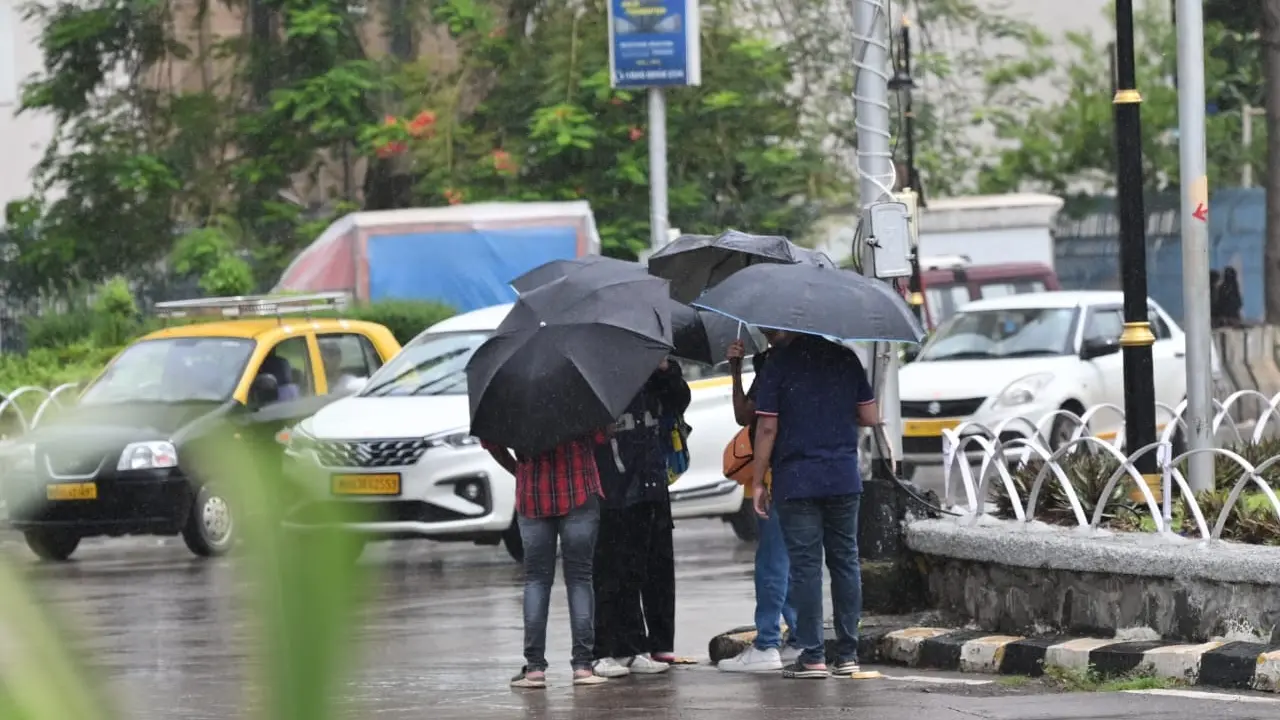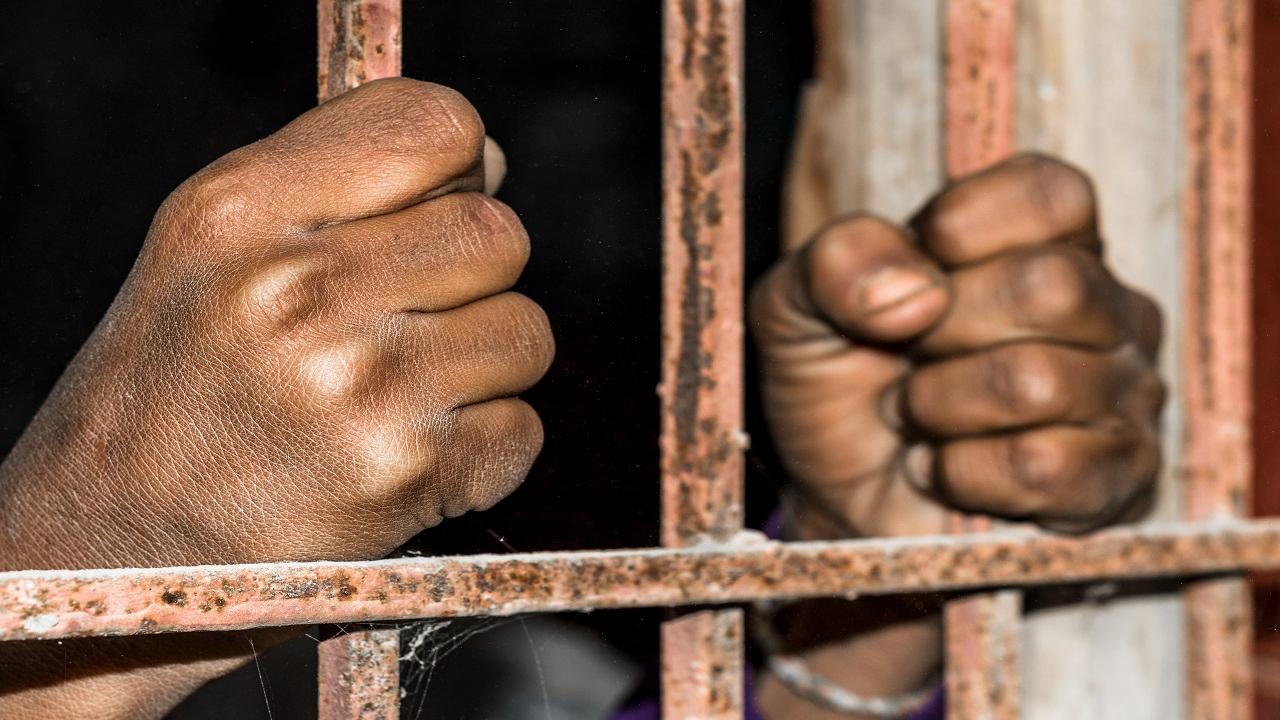The sight of bright red Brihanmumbai Electric Supply and Transport (BEST) buses bearing flashy advertisements for app-based bike services has irked several citizens, who say the city’s public transport utility is effectively promoting its private competitors. Commuters have pointed out that the BEST undertaking — already struggling to retain passengers amid the growing popularity of cab aggregators and two-wheelers — should be more careful about what it chooses to advertise on its buses.
“While ad revenue matters, shouldn’t there be basic screening, so public buses don’t end up promoting services that compete with them? Public assets shouldn’t advertise their own substitutes,” said transport planner Aditya Rane, who spotted a bike ad on a bus in South Mumbai earlier this week. Fellow commuter Abhishek Risbud agreed, adding, “Placing such ads is a way of discouraging the use of buses. BEST certainly needs ad revenue; however, it shouldn’t be at the cost of losing its own passengers. They have to be conscious and filter the ads that they accept.”
Abhishek Risbud, commuter and Shubham Padave, regular bus user
Others have also raised safety concerns over the way advertisements are placed on the buses. Shubham Padave, a regular bus user, said, “These advertising agencies don’t even bother about emergency precautionary measures. Emergency buttons are covered by stickers, and God knows what BEST is monitoring in their buses.”
“Due to the current shortage of BEST buses, passengers are being forced to wait unnecessarily for long periods at bus stops. The newly launched Metro transit system has also led to a decline in the BEST’s ridership. In such a situation, allowing advertisements of bike taxi services on BEST buses could prove extremely detrimental to the undertaking. It raises a strong suspicion that such decisions might be taken by the BEST management deliberately,” said Rupesh Shelatkar, president of the commuter rights’ body, Aapli BEST Aaplya Sathi.
Significant cushion
Officials from BEST, however, said the advertisements are handled by licensed agencies and follow contractual norms. “Ad rights are awarded through tenders. We are aware of the concerns raised and will look into them,” said a senior BEST official, requesting anonymity.
Advertising on buses forms a crucial part of BEST’s non-fare revenue model. Representation pic/SAYYED SAMEER ABEDI
Advertising on buses forms a crucial part of BEST’s non-fare revenue model. The undertaking earns several crores annually through ad contracts across its fleet, bus stops, and depots — a significant cushion amid operational losses. Transport analysts point out that such instances highlight the tightrope public utilities walk between raising funds and maintaining brand integrity.
“While revenue diversification is necessary, messaging matters, too,” said a senior transport planner. Once the pride of Mumbai’s streets, the city’s red BEST buses are increasingly becoming a rare sight. With a shrinking fleet, mounting losses, and delays in adding new vehicles, commuters are complaining of longer wait times and overcrowded buses — symptoms of a system struggling to stay on the road.
Data accessed from recent civic reports shows that the BEST’s active bus fleet — once over 4000-strong — has dipped to around 3000 to 3200 buses, including leased and wet-leased ones. The undertaking has been relying heavily on private operators to keep services afloat, a move that has drawn both support and criticism.











